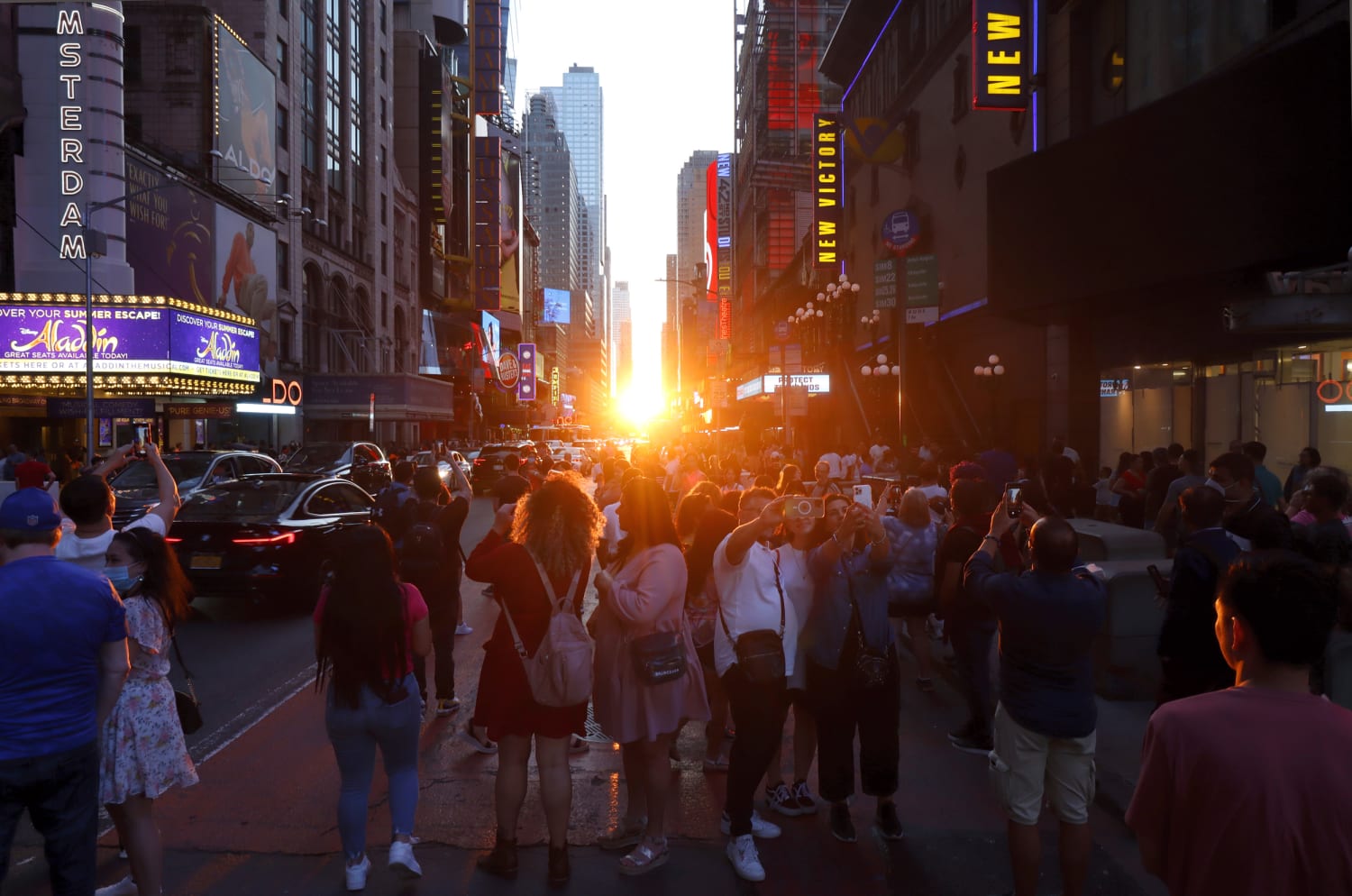

New Yorkers and tourists alike spending their Memorial Day in the Big Apple on Monday will be treated to a city-stopping spectacle: Manhattanhenge.
Manhattanhenge, a portmanteau of “Manhattan” and “Stonehenge,” is a twice-a-year solar event when the sunset lines up directly with the city’s grid, casting golden rays down city streets. Several of the stones in Stonehenge, the prehistoric monument in Wiltshire, England, experience perfect alignment with the sun during the summer and winter solstices, which is why the event takes its name from the rock formation.
A Manhattanhenge sunset can bring the borough to a standstill as city dwellers and visitors clamor for a glimpse — and maybe a snapshot — of the city bathed in golden light.
This year’s Manhattanhenge dates correspond with both Memorial Day and Major League Baseball’s All-Star break, according to the American Museum of Natural History.
“For these two days, as the Sun sets on the grid, half the disk sits above and half below the horizon. My personal preference for photographs. But the day after also offers Manhattanhenge moments, but at sunset, you instead will find the entire ball of the Sun on the horizon,” Neil deGrasse Tyson, the director of the American Museum of Natural History’s Hayden Planetarium, said on the museum’s website.
Those hoping to catch a glimpse of the half-sun Manhattanhenge can do so at 8:13 p.m. ET Monday and again on Thursday, July 13, at 8:21 p.m. ET.
The full sun effect can be viewed at 8:12 p.m. ET Tuesday and again at 8:20 p.m. ET on Wednesday, July 12.
The museum recommends watching the event on the east-west thoroughfares of Manhattan’s 14th, 23rd, 34th, 42nd or 57th streets.

 Latest Breaking News Online News Portal
Latest Breaking News Online News Portal




